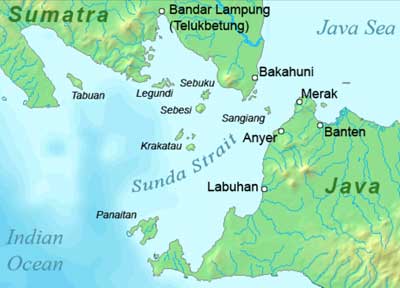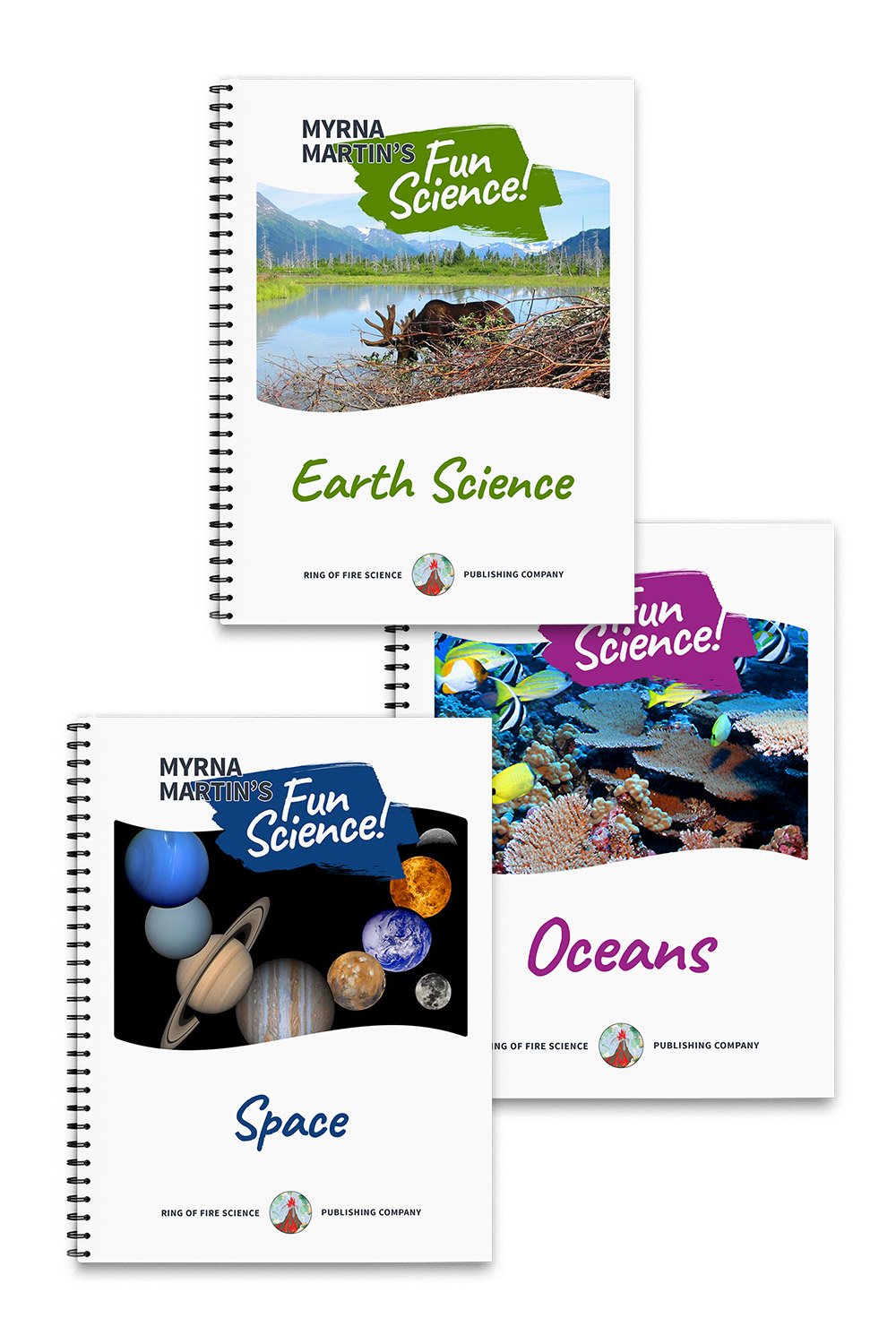Krakatoa Eruption
1883 Krakatoa eruption
The 1883 Krakatoa eruption occurred in Indonesia (Dutch East Indies) on the island of Krakatoa. It was the deadliest volcanic eruption in recorded history. Two-thirds of the island of Krakatoa collapsed during four different gigantic eruptions on August 27th.
Death toll caused by the Krakatoa eruption
The official death toll was placed at 36,417. Some estimates place the death toll at over 120,000. People killed by tsunamis sweeping over low-lying islands carried people out to sea where some of them floated on the oceans for over a year. There are reports of skeletons floating on debris from the eruption coming ashore in Africa a year later.
 Krakatoa, Sunda Strait
Krakatoa, Sunda StraitExplosive volcanoes - Krakatoa eruption
There were three explosive volcanoes that made formed the island of Krakatoa in 1883. Perboewatan, was the northern most volcanic cone. It started to erupt on May 20th. By the 24th of June ash from the eruption reached 20,000 feet (6 km) during the eruptions.
August 11, a Dutch engineer, investigated the islands and reported back that Danan, the middle volcano cone, had started to erupt. Between Perboewatan and Danan two new volcano vents opened up and were also erupting. He also reported that he could view eleven new volcanic vents that were in erupting ash and pumice during his investigation. The eruptions continued into the middle of August with volcanic activity all over the island.
The August 25th a black cloud of ash blew into the air 17 miles (27 km) high. The volcano vents on the island were almost continuously erupting and explosions could be heard every ten minutes by nearby ships. Pumice up to 4 inches (10cm) in diameter fell on the decks of the ships.
The August 27, 1883 Climatic Eruption
Four enormous eruptions occurred on this date that destroyed almost two-thirds of the island during the Krakatoa Eruption. The eruptions triggered large pyroclastic flows, tsunamis and a large landslide.
- The first eruption began at 5:30 a.m. The explosive eruption on Perboewatan volcano created tsunami waves that went toward Telok Betong after large pyroclastic flows entered the oceans.
- At 6:44 a.m. Danan volcano exploded forming pyroclastic flows that entered the ocean creating tsnuamis that traveled eastward and westward away from the island.
- The 10:02 a.m. volcanic explosion was so loud it was heard 1,930 miles (3,110 km) away in Perth, Australia. The noise was so loud people on the island of Rodrigues 3,000 miles (4,800 km) away the explosion thought a nearby ship had fired a cannon. This explosion was large enough to create tsunami waves 98 feet (30 meters) high. Pyroclastic flows traveled across the ocean to islands in the Sunda Strait where the coast line was affected and villages swept away. Hot ash fell on Katimbang (now Katibung) killing 1000 people.
- A landslide at 10:41 a.m. tore off half of Rakata volcano, the third cone on the island. The island almost disappeared and a deep submarine canyon was filled with ignimbrite from the pyroclastic flows. It is estimated that between 4.3 and 5.0 cubic miles (18-21 cubic km) of ignimbrite was deposited in a 420,000 square mile (1,100,000 square km) area. The material is between 98 and 131 feet (30-40 m) deep in the submarine basin around the island.
- In 1927 a new island began to form and was named Anak Krakatoa. It means child of Krakatoa. It has been erupting off and on since 1927. Find out more about the island by clicking on the link above.
What is a tsunami?
A tsunami is a large ocean wave that travels through the oceans at about the speed a jet plane flies. They are generated by large earthquakes, landslides or during a volcanic eruption like Krakatoa when pyroclastic flows entered the ocean. The first tsunami struck the shores of Java and Sumatra 25 miles (40 km) away on August 25th.
What is a pyroclastic flow?
Superheated gases, ash, pumice and other volcanic debris form pyroclastic flows that travel down the side of a volcano at hurricane wind speeds. The pyroclastic flows sweeping down the sides of Mount Saint Helens in 1980 flattened old growth trees growing on the sides of the mountain.
The 1883 pyroclastic flows entered the oceans and were carried across the surface of the oceans on superheated gases until they reached land destroying everything in their path. There is also pyroclastic flow debris that was found on the ocean floor that travels through the water for 9.3 miles (15 km).
What is ignimbrite?
Ignimbrite is the material deposited by pyroclastic flows. Ignimbrite contains ash, pumice, and volcanic debris. Ignimbrite is produced by Plinian eruptions and super volcano eruptions.
More Volcano Links
|
Volcanoes for Kids |
Pompeii Eruption |
KIDS FUN SCIENCE BOOKSTORE
 |
 |
Check out Myrna Martin's award winning textbooks, e-books, videos and rock sets. The Kids Fun Science Bookstore covers a wide range of earth science topics. Click here to browse.
Sign up to our monthly newsletter and receive our FREE eBook containing 3 fun activities that don’t appear in any of our other books!
The Kids Fun Science monthly newsletter will include the following: current events, weird and fantastic facts, a question of the month, science trivia and the latest new content from our website.
We respect your privacy and you can be assured that we will never share your email address or use it for any other purpose than to send you our newsletter.






